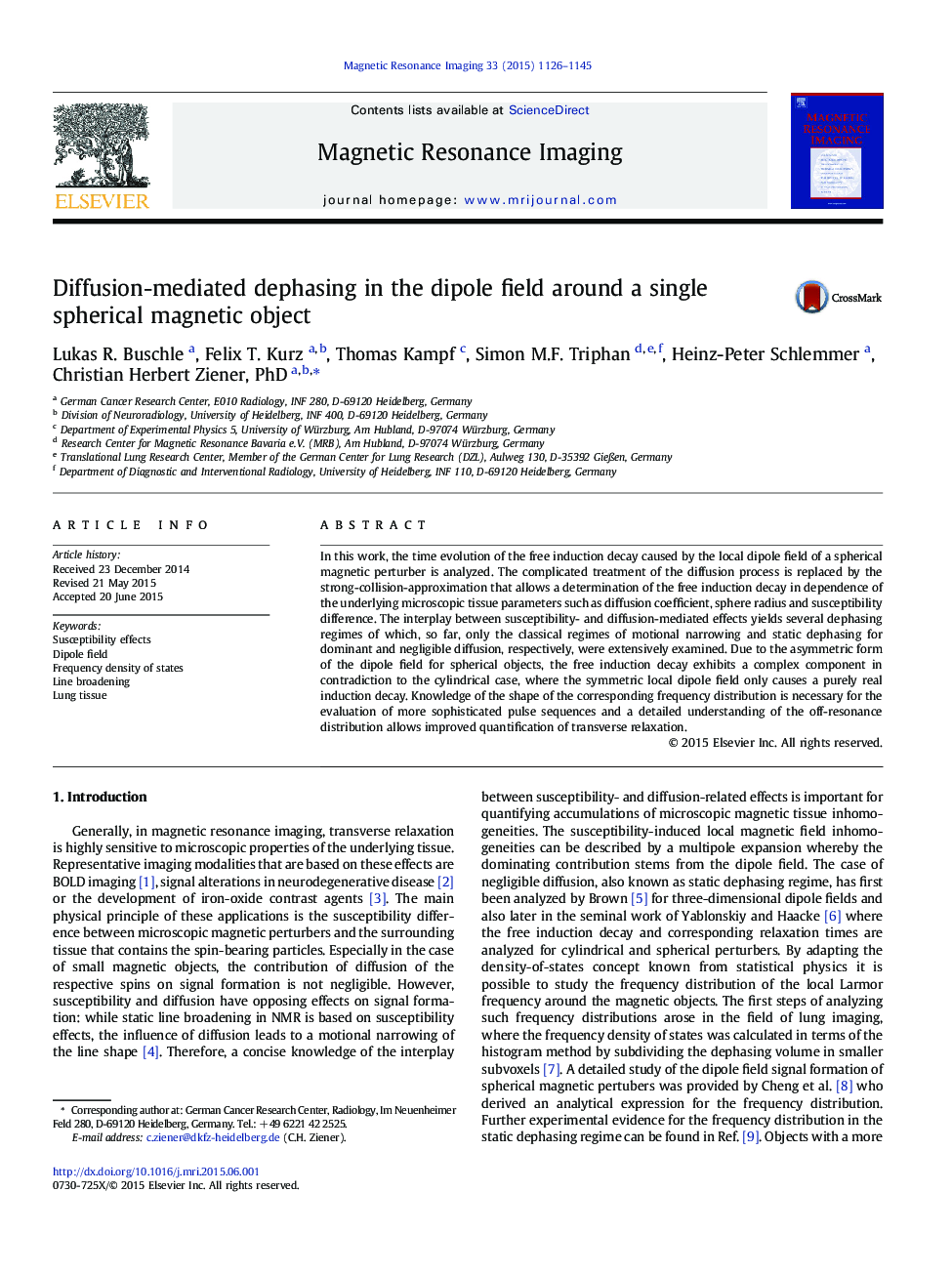| Article ID | Journal | Published Year | Pages | File Type |
|---|---|---|---|---|
| 10712468 | Magnetic Resonance Imaging | 2015 | 20 Pages |
Abstract
In this work, the time evolution of the free induction decay caused by the local dipole field of a spherical magnetic perturber is analyzed. The complicated treatment of the diffusion process is replaced by the strong-collision-approximation that allows a determination of the free induction decay in dependence of the underlying microscopic tissue parameters such as diffusion coefficient, sphere radius and susceptibility difference. The interplay between susceptibility- and diffusion-mediated effects yields several dephasing regimes of which, so far, only the classical regimes of motional narrowing and static dephasing for dominant and negligible diffusion, respectively, were extensively examined. Due to the asymmetric form of the dipole field for spherical objects, the free induction decay exhibits a complex component in contradiction to the cylindrical case, where the symmetric local dipole field only causes a purely real induction decay. Knowledge of the shape of the corresponding frequency distribution is necessary for the evaluation of more sophisticated pulse sequences and a detailed understanding of the off-resonance distribution allows improved quantification of transverse relaxation.
Related Topics
Physical Sciences and Engineering
Physics and Astronomy
Condensed Matter Physics
Authors
Lukas R. Buschle, Felix T. Kurz, Thomas Kampf, Simon M.F. Triphan, Heinz-Peter Schlemmer, Christian Herbert PhD,
